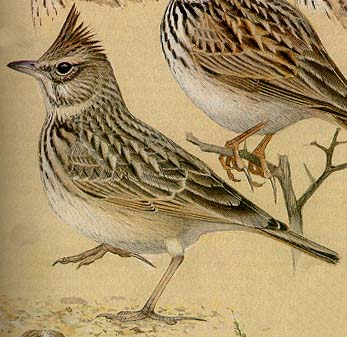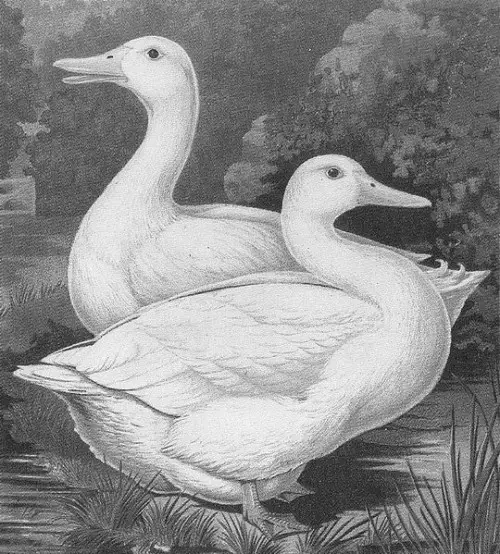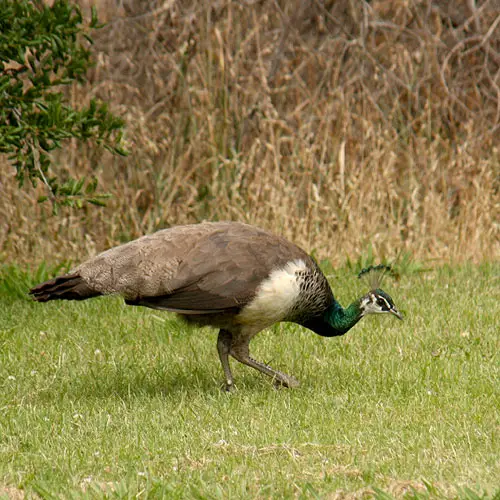East African Crowned Crane
The East African Crowned crane is a tall, majestic looking bird which sports a crown of sorts, made of tall stiff golden feathers that looks for all the world like a real crown.
He has large white patches of feathers on his cheeks with small red patches at the top of them and a slate gray coloring over most of his wings, with a black bill and legs.

The African Crowned Crane sports yellow head feathers that do look like a crown
The African Crowned is quite tall for a Crane, at about three feet high when they are fully mature, with the crown making them appear taller still.
They are among the largest of the cranes with a wing span that can reach six and a half or seven feet across when they are in flight.
The East African Crowned Crane is found near rivers and wetlands, usually in marshy grasslands near rivers or lakes in Eastern Zaire, Kenya, Tanzania and Uganda. The Crowned Crane is also the national bird of Uganda.
Social and gregarious during most of the year, moving about in flocks of up to 100 and roosting in trees or riverbeds.
They gave a very loud and melodious cry that they give while in flight, which has led to some of the beliefs that are held about them being magical creatures by the local African people who live near them or in their range.
Many people believe that the cranes are able to bring the rains with them and many of them will also incorporate the cranes, or their actions into their own sacred rituals in order to bring about the rainy season.
The cranes’ long legs and necks and excellent peripheral vision help them spot predators in the tall Savannah grasses.
In breeding season which is springtime in this area, the pairs of cranes will build nests which are very large, made of grass and vegetation on the lesser wet parts of the marshy ground or even in shallow water.
Two to three eggs are laid, and both parents take turns incubating them for the thirty days it takes for the chicks to hatch. The chicks can run as soon as they hatch, and within ten weeks can fly.
The cranes remain monogamous, and even after the chicks leave the nest the pair remains together, and will breed each season strictly with each other, remaining paired for life.
All cranes, these as well as most other varieties are famous for the spectacular dances they do when mating, which involves head-bobbing, wing fluttering, leaps and bows. Both sexes dance, and immature birds join the adults. Dancing is an integral part of courtship but also may be done at any time of the year.
An omnivore, the crowned crane eats plants, seeds, grain, insects, frogs, worms, snakes, small fish and eggs of water animals. Stamping their feet as they walk, they flush out insects which are quickly caught and eaten.
“Many swamps and marshes where crowned cranes nest are being drained for agriculture. Crowned cranes are popular attractions in zoos and are often the victims of illegal trade. Though not yet considered endangered, their future is far from certain.” says the Red List



that bird is one of a kind